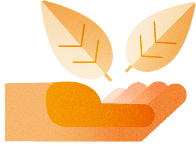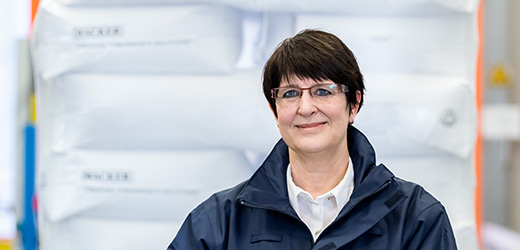Supply Chain
Approaches with Fewer Emissions
In 2021, WACKER spent €3.8 billion on sourcing energy, goods and services – a huge figure that indicates enormous potential for sustainability. To leverage that potential, Procurement is opening up new avenues to lowering our carbon footprint.
“Proof of sustainability is already on hand for 96 percent of the company’s purchasing volume from key suppliers,” says Dr. Erk Thorsten Heyen, head of Procurement. He feels WACKER is in a good position to comply with Germany’s Supply Chain Act: “Supplier questionnaires from the Together for Sustainability procurement initiative offer a tool for reviewing whether suppliers respect human rights.”
Reducing its carbon footprint is the key issue for the supply chain going forward. Suppliers’ Scope 3 emissions are to be reduced by 25 percent by 2030. Scope 3 encompasses all those supplier emissions relating to WACKER’s procurement that arise throughout the supply chain. In 2020, this category encompassed over five times more CO2 emissions than were generated by WACKER’s production activities (“Scope 1”).
According to Heyen, WACKER has significantly reduced its emissions from shipping. A few years ago, for example, the company worked with partners to invest in a container terminal in Burghausen for ChemDelta Bavaria. The majority of the container shipments from Burghausen are sent by rail from here to sea ports. WACKER also receives the lion’s share of its raw materials by rail. In addition, the chemical company has been working systematically to optimize the capacity utilization of containers and trucks, thereby reducing the corresponding emissions.

The packaging used for shipments has become more sustainable as well. WACKER sells hundreds of millions of liters of silicone fluids and polymer dispersions, for example, in IBC containers, which it increasingly gets made from recycled polyethylene. Reconditioned steel drums and packaging bags made of unbleached virgen fiber will likewise improve the company’s carbon footprint. “Two years ago, a lot of customers were still rejecting powder bags that weren’t white,” Heyen recalls. “The more environmentally friendly version has since taken hold.”
The major CO2 advances will have to come from top raw materials, however. For the past two years, WACKER has been asking its suppliers of key raw materials to provide a product carbon footprint – and then works with the supplier to find ways of reducing that footprint. Silicon metal – the source of the silicones and polysilicon from which solar cells and semiconductor chips are made – is an example of a material offering a great deal of potential. Production of silicon metal has traditionally been the single largest item on the list of Scope 3 emissions. “Using green electricity and firing furnaces with charcoal rather than fossil-based coal can reduce emissions by more than 70 percent,” Heyen says. He adds, however, that doing so depends on one thing: “If costs go up, customers and suppliers will have to agree on how to shoulder those costs.”



